The Latest from Boing Boing |  |
- Fate of Spain's Internet/copyright law depends on El Pais releasing relevant Wikileaks cables NOW
- Judge in Xbox hacker trial unloads both barrels on the prosecution
- UK charity will give away 1,000,000 books, and you can hand them out!
- 1895 Viennese Archetype Images
- BuyThisSatellite: $150K crowdfunding project to provide net access to poor countries with a bankrupt hi-cap comsat
- Who spies on your browsing history?
- High-speed camera shooting FROM a train
- State of the indy music industry looks rosy, so why all the doom-and-gloom about music?
- Jesus mourns Tokyo subway umbrella losses
- Bowls made from melted army men
- TSA recommends using sexual predator tactics to calm kids at checkpoints
- Birthday greeting hidden in a noise-file's spectrogram
- One Degree of Kevin Bacon
- I Am a Bicycle Tire Tube
- What happens when bees dine out at a maraschino cherry factory
- An interactive history of American space travel
- Nope, we haven't found life on another planet
- Amanda Vissell's posters for girls
- Jonathan Coulton's "Shop•Vac" in kinetic type
- Post your green-worthy DIY project to MAKE and win a trip to Maker Faire!
- Oklahoma city mayor bans Lingerie Football League
- Guardian: U.S. politicians told Amazon to remove Wikileaks
- And now, the floor-cleaning shoe
- Students doing right by making medicine accessible to the developing world.
- Wikileaks 'ousted' from Amazon
- Creative Commons Xmas carol, "Please Share Alike"
- 10 years ago: disguise email messages as spam
- People use Happy Foot / Sad Foot sign as fortune teller
- 14 Tracks from Chris & Cosey
- Interview with Thomas Gayno of Google's Creative Lab about Wilderness Downtown
| Fate of Spain's Internet/copyright law depends on El Pais releasing relevant Wikileaks cables NOW Posted: 02 Dec 2010 04:18 AM PST  Spain's El Pais newspaper is in possession of 115 Wikileaks intercepts that have been tagged as relating to "Intellectual Property." These likely relate to Spain's new copyright law, which the country was pressured into passing through its trade negotiations with the USA. The law is being put to a vote this month, and release of these cables would likely have a major impact on the outcome of the vote; however, El Pais has indicated that it has no intention of prioritizing these cables, even if that means that material that is directly germane to a vote on a major shift in Spanish law will not be revealed until it is too late. Javier de la Cueva of the Spanish "Derecho de Internet" site is calling for a "Wikileaks leak," asking for someone to release these cables before his government commits itself to a disastrous and extreme course of action. Spain's El Pais newspaper is in possession of 115 Wikileaks intercepts that have been tagged as relating to "Intellectual Property." These likely relate to Spain's new copyright law, which the country was pressured into passing through its trade negotiations with the USA. The law is being put to a vote this month, and release of these cables would likely have a major impact on the outcome of the vote; however, El Pais has indicated that it has no intention of prioritizing these cables, even if that means that material that is directly germane to a vote on a major shift in Spanish law will not be revealed until it is too late. Javier de la Cueva of the Spanish "Derecho de Internet" site is calling for a "Wikileaks leak," asking for someone to release these cables before his government commits itself to a disastrous and extreme course of action. We need urgently those 115 cables tagged KIPR Madrid Embassy (Thanks, Javier!) |
| Judge in Xbox hacker trial unloads both barrels on the prosecution Posted: 02 Dec 2010 04:09 AM PST U.S. District Judge Philip Gutierrez opened the trial of alleged Xbox hacker Matthew Crippen with a bang yesterday, berating the prosecution for calling government witnesses who admitted to committing crimes but asking these crimes to be kept secret from the jury; for their theories relating to fair use, and for a "laundry list" of other complaints. The public dressing down went on so long that it actually drew a crowd, and it ended with prosecutor Allen Chiu saying, "I apologize to the court," whereupon the trial was suspended. Xbox-Modding Judge Berates Prosecution, Puts Trial on Hold (via /.) (Image: FP GoW, a Creative Commons Attribution (2.0) image from novasonicmods's photostream) |
| UK charity will give away 1,000,000 books, and you can hand them out! Posted: 02 Dec 2010 03:58 AM PST  BillT sez, "A UK-based charity plans to give away a million books - 40,000 copies each of twenty-five selected titles - on March 5 next year. The list of authors includes Toni Morrison, Seamus Heaney, Mark Haddon, Margaret Atwood and Erich Maria Remarque... If you live in the UK and Ireland you can sign up as a book-giver - 20,000 will be selected and each will receive a box of books to hand out." WorldBookNight (Thanks, Bill!) |
| 1895 Viennese Archetype Images Posted: 29 Nov 2010 08:13 PM PST
They are images meant to awaken the instinctive understanding of the viewer. Since they come from 1895 Vienna, the instinctive ability of the modern viewer may be limited, or may allow for a peek into the mind of the past. The image of electricity is most compelling, although I personally don't recognize every aspect of that drawing. These images can be a puzzle, with many pieces combined to form a greater whole. The image marked 'empire' has a number of turn of the century themes combined to show the hope for a Western European Empire: medicine, industry, foreign goods, a connected postal system, etc. And then, there are the beer and wine images. All of the drawings are provided in high quality with a friendly CC 3.0 license. Prost! |
| Posted: 02 Dec 2010 12:04 AM PST A new NGO called A Human Right is attempting to raise $150K in a bid to buy one of the world's highest capacity communications satellites from its bankrupt owners in order to re-task it to supply Internet access to the world's poorest people. They plan on building their own super-cheap satellite modems as well. Unlike most crowdfunding projects, they've put up bios of their team and advisors (I pass on nearly every Kickstarter project I get sent because the creators don't detail any successful project they've done before), which includes telcoms veterans, accomplished technologists, and aerospace experts. They also claim support from organizations as diverse as NASA, Fon, and Deutsche Telekom Labs. Although we believe in free Internet for the planet, there are some realities to face: like paying the rent.Buy This Satellite (via Futurismic) |
| Who spies on your browsing history? Posted: 01 Dec 2010 11:55 PM PST 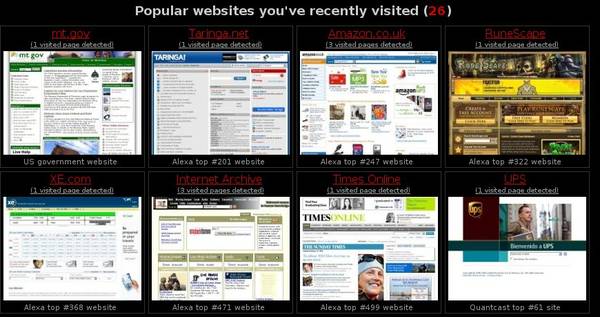 We've written before about the security vulnerability that allows websites to sniff your browsing history. A paper from UC San Diego computer science department researchers, "An Empirical Study of Privacy-Violating Information Flows in JavaScript Web Applications," surveys which websites use this invasive technique against their users. YouPorn tops the list, but PerezHilton, Technorati, TheSun.co.uk, and Wired are also spying on their users' browsing habits by exploiting this vulnerability. So I checked in with Interclick. Interclick explained that it deployed the script on websites around the Web over a limited period, from March to October, to test the quality of data sets it had purchased. "Interclick purchases anonymous audience data from several vendors for the purpose of targeting advertising campaigns. Consequently, it has a number of quality control measures in place to understand the quality and effectiveness of this data. The code observed in the paper was a quality measure being tested," said Interclick in a statement to me. Firefox's "Private Browsing" facility appears to be proof against this attack, for what it's worth. History Sniffing: How YouPorn Checks What Other Porn Sites You've Visited and Ad Networks Test The Quality of Their Data (via JWZ) (Image: What the Internet Knows About You vs my browser history) |
| High-speed camera shooting FROM a train Posted: 01 Dec 2010 11:46 PM PST Graeme Taylor shot out the window of a train at 210 frames per second, reversing the usual trick of shooting and slowing down a high-speed object from a stationary spot; rather, he shot a stationary spot from a high-speed object. The effect is something like a mundane bullet-time, where the world has stopped so that no one can do anything much of anything. It's mesmerizing. As Jason Kottke writes, "Wonderful illustration of the concept of frames of reference." Both glides were filmed by sticking a - relatively cheap - digital camera out of the window of a train as it arrived at a station. The 'trick' is the camera collects images at a rate of 210 per second - but the film is played back at 30 frames per second. So, every seven seconds of footage that you watch corresponds to 1 real second. At least at the start, one real second is plenty of time for someone to move into, then out of, the camera's field of view, but isn't enough time for them to really do much: hence, the frozen effect. It breaks down towards the end not because I'm doing something clever with the frame rates (captured or replayed), but simply because the train was stopping! Thus, as it decelerated, any given person would be in view for longer, and have more time to point an arm, take a few steps along the platform, or maybe even notice me at the window. Any such action captured is still slowed down seven-fold during playback, just as with my usual static captures. "Pointless, action-free and totally mesmerising"
|
| State of the indy music industry looks rosy, so why all the doom-and-gloom about music? Posted: 01 Dec 2010 11:39 PM PST 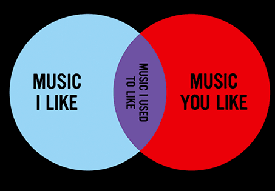 TuneCore's Jeff Price has a six-part series analyzing the financial state of the music industry from the point of view of an independent artist. Price offers compelling reasons to believe that although the labels are experiencing a severe downturn, artists as a group are earning more than ever, thanks to the Internet. TuneCore's Jeff Price has a six-part series analyzing the financial state of the music industry from the point of view of an independent artist. Price offers compelling reasons to believe that although the labels are experiencing a severe downturn, artists as a group are earning more than ever, thanks to the Internet. I have a feeling that the record industry's rejoinder to this would be, yes, more artists are earning some money from their music, and all told, there's more money going to artists than ever before, but there are fewer opportunities for an artist to sign up to a label like ours that controls so much of the distribution channel that we can guarantee large sums of money for these lottery winners. In other words, the music industry today is much less winner-take-all, with the benefits diffused to a larger pool of artists at the expense of the few who did so well under the old system. This is what I mean when I say a good copyright system is one that encourages the broadest-possible engagement in culture: more music, from more musicians, reaching more people, at more price-points, in more formats. It's a win for free expression and for art, but it's a loss for some artists and the institutions that supported them. I don't celebrate those losses: it's terrible to think of people who loved and lived for music losing their jobs (most of the people at labels aren't greedy tools deciding to sue 40,000 music fans; greedy tool-dom is confined to a few powerful decisionmakers). It's sad to think of the tiny pool of musicians who did so well taking a loss (though before we weep for them too much, remember that yesterday's winners are well situated to get even richer from merch, performance and licensing, even without the archaic recorded music industry and its shiny bits of plastic). But copyright's purpose should be to get as much art made and available as possible -- it's not a full-employment scheme for administrators and marketing people and record-store clerks; it's not a lottery that makes millionaires out of a couple of lucky artists. There's nothing wrong with it doing those things, but they aren't why it's there: it's there to fuel expression and art. The reality is:The State of The Music Industry & the Delegitimization of Artists (via EFF Deep Links) (Image: Diesel Sweeties tee) |
| Jesus mourns Tokyo subway umbrella losses Posted: 01 Dec 2010 11:16 PM PST |
| Bowls made from melted army men Posted: 01 Dec 2010 11:12 PM PST If you like the melted toy soldier bowl Mark blogged in 2004, you can buy it from the artist, Dominic Wilcox, or try your hand at making one in your oven:
Bowl made from melted little green army men |
| TSA recommends using sexual predator tactics to calm kids at checkpoints Posted: 01 Dec 2010 11:07 PM PST TSA regional security director James Marchand advises parents whose kids are upset by TSA groping to make a game of it, a suggestion that alarmed sex-abuse prevention experts, since "Telling a child that they are engaging in a game is 'one of the most common ways' that sexual predators use to convince children to engage in inappropriate contact." (via Reddit) |
| Birthday greeting hidden in a noise-file's spectrogram Posted: 01 Dec 2010 11:03 PM PST  John "Control Geek" Huntington's sound-geek friend Jamie made him this awesome birthday message by designing a noisy audio file that would turn into a birthday greeting when it was turned into a spectrogram (Wikipedia: "a time-varying spectral representation (forming an image) that shows how the spectral density of a signal varies with time"). Spectrogram Birthday (Thanks, John!) |
| Posted: 01 Dec 2010 10:16 PM PST Kevin Bacon plays his own superfan in creepy verisimilitude in this ad for the Google TV-based Logitech Revue. It's like Being John Malkovich crossed with Misery crossed with a Fargo-like sense of wonder (before the woodchipper comes out). |
| Posted: 01 Dec 2010 08:31 PM PST  I went in for surgery yesterday morning to repair a small umbilical hernia. Mildly graphic material follows. My belly button done did me wrong. Having only had a few minor surgeries before, the most recent about nine years ago, I was surprised by a number of changes in procedure, the kind of clinically tested improvements we all hope are going on behind the scenes, and we often doubt are. The operation itself was quite simple, and took under an hour. I received a mild general anesthetic, and a local was applied liberally to my belly. I don't even recall being asked to count backwards from five. The surgeon cut a small slit in my belly button and cleaned up protruding material. Then he took a small circle of polypropylene and stitched this with permanent stitches inside the muscle, a neat trick. This is relatively new: a few years ago, small umbilical hernias were merely stitched, but the recurrence rate was unacceptably high. I joked to my kids that I was being repaired like a bicycle tire tube: the doc would put a plastic patch on me and glue it on. And that was true: the incision was glued shut, and scarring, if any, will be invisible. In the future, we are all bicycle tubes. I went in for surgery yesterday morning to repair a small umbilical hernia. Mildly graphic material follows. My belly button done did me wrong. Having only had a few minor surgeries before, the most recent about nine years ago, I was surprised by a number of changes in procedure, the kind of clinically tested improvements we all hope are going on behind the scenes, and we often doubt are. The operation itself was quite simple, and took under an hour. I received a mild general anesthetic, and a local was applied liberally to my belly. I don't even recall being asked to count backwards from five. The surgeon cut a small slit in my belly button and cleaned up protruding material. Then he took a small circle of polypropylene and stitched this with permanent stitches inside the muscle, a neat trick. This is relatively new: a few years ago, small umbilical hernias were merely stitched, but the recurrence rate was unacceptably high. I joked to my kids that I was being repaired like a bicycle tire tube: the doc would put a plastic patch on me and glue it on. And that was true: the incision was glued shut, and scarring, if any, will be invisible. In the future, we are all bicycle tubes. But the two significant changes, one of which I experienced earlier this year with someone else going through surgery, were prophylaxis. First, at Swedish Medical Center it is standard practice to more or less politely demand that patients take two showers before surgery using chlorhexidine (one trade name is Hibiclens), one the night before and one the morning of, using a carefully described process. I had no fewer than five people along the path from consulting on surgery to the day of remind me and check that I had done so. I read through research on this, and found that sometimes dramatic reductions in microbial infections come about from this cheap and simple pre-hospital prep. As the RN handling intake at the hospital also noted, patients come from a variety of socioeconomic backgrounds, and have varying standards of hygiene. However, she said, even with a high degree of personal care, microbes lurk, and pre-op surgical cleaning by itself isn't nearly as effective. It appears the CDC started recommending this step just a few years ago, but clinical research for specific procedures showing its efficacy dates back over a decade. Second, I was given an antibiotic dose about an hour before surgery. This is apparently also now typical, and seemingly a few years old as a general recommendation from what I can tell from medical papers and online hospital procedures. A small dose before surgery is equivalent to a 24-hour course following surgery, with the advantage of using far less antibiotic. I was heartened by everything I learned before and during my outpatient surgery. You want to believe that professions learn and improve. In some medical experiences, notably dealing with obstetricians, there appears to be an unfortunate amount of oral history that is maintained despite clinical research, continuing education, and simple observation. There's so much to gained in reducing infection rates that clearly the good hospital where I had my surgery has invested in the top-to-bottom training that I was the beneficiary of. (I'm feeling fine, thank you!) |
| What happens when bees dine out at a maraschino cherry factory Posted: 01 Dec 2010 07:09 PM PST Bees in Brooklyn are producing bright red honey, the result of dining upon the sweet, sweet runoff of a nearby maraschino cherry factory. Sadly, the cherry-syrup honey does not taste as amazing as you might imagine. It's said to be "metallic", followed by "overly sweet". (Via Richard Martyniak) |
| An interactive history of American space travel Posted: 01 Dec 2010 06:57 PM PST  I absolutely love this. Spacelog.org is taking the radio transcripts from NASA missions, pairing them with great graphic design, and making the whole thing searchable and linkable. The result: An delightfully immersive perspective on history. They've got transcripts finished for Apollo 13 and John Glenn's Mercury 6. But more are on the way, and Spacelog could use your help adding to and improving the site. |
| Nope, we haven't found life on another planet Posted: 01 Dec 2010 06:34 PM PST  So, a couple of days ago, when NASA sent out a press release announcing "an astrobiology finding that will impact the search for evidence of extraterrestrial life", I went scrounging around for the embargoed details and managed to look everywhere except the one place that had the information. Having now seen what's actually being announced tomorrow, I have some good news and bad news. Bad news first: Kottke's speculations are wrong, and this announcement has nothing to do with newly discovered life—or signs of life—on another planet. The good news: What is being announced is still pretty interesting, if you're into astrobiology and weird life on Earth. I'm going to go ahead and hold the embargo. I'll post something here about NASA's real news tomorrow afternoon. But I did want to clear up exaggerations that I helped spread the other day, and make sure you guys had a better picture of what was actually going on. Sometimes, I get overly excited and bite into bait I ought to leave alone. My apologies on that. Also: Not everybody is holding the embargo. A simple Google search will turn up the news of tomorrow, today, if you want it. Frustrated by the concept of embargoes, in general? Join the club. I highly recommend the Embargo Watch blog for some in-depth discussions of what purpose embargoes serve, why journalists follow them, and how the system needs to change. Some rights reserved by MJTR (´・ω・) |
| Amanda Vissell's posters for girls Posted: 01 Dec 2010 05:41 PM PST  My friend, the artist Amanda Vissell, painted these wonderful posters for girls. They cost $30 each or you can get all four for $100. I decided to make a line of posters for girls. In a world where girls grow up feeling like their value is how they look these are meant to be a friendly reminder that they can do anything. That they can dream up their lives and make it happen. In the end we all do, it's just how big we dream.Amanda Vissell's posters for girls |
| Jonathan Coulton's "Shop•Vac" in kinetic type Posted: 01 Dec 2010 05:10 PM PST Video link. Boing Boing fave Jonathan Coulton had his peppy song "Shop•Vac" given the kinetic type treatment by designer Jarrett Heather. The sheer amount of brand references in the typography will surely please the brand geeks and font geeks among us. |
| Post your green-worthy DIY project to MAKE and win a trip to Maker Faire! Posted: 01 Dec 2010 04:15 PM PST Katie Dougherty of MAKE says:
|
| Oklahoma city mayor bans Lingerie Football League Posted: 01 Dec 2010 02:34 PM PST Ted Balaker of Reason.tv says: "This is what happens to freedom of assembly when mayors and council members get to say who assembles -- arbitrary restrictions based on the tastes of those who hold office. And in this case the mayor hasn't even felt it necessary to explain why he sacked the Lingerie Football League. He simply says that "there are too many problems to list," and leaves it at that." To watch previous Nanny of the Month episodes, go here. |
| Guardian: U.S. politicians told Amazon to remove Wikileaks Posted: 01 Dec 2010 01:52 PM PST When Wikileaks twittered that Amazon's removal of its website from its servers was a "free speech" issue, it seemed an odd turn of phrase: after all, Amazon is a private company and is free to host what it likes. The Guardian has just reported, however, that it did indeed remove Wikileaks after being pressured to do so by the U.S. government. Ewan MacAskill writes that U.S. Senator Joe Lieberman offered a prepared statement, announcing Wikileaks' removal from Amazon's server, as the plug was pulled. The United States struck its first blow against WikiLeaks after Amazon.com pulled the plug on hosting the whistleblowing website in an apparent reaction to heavy political pressure. ... "[Amazon's] decision to cut off WikiLeaks now is the right decision and should set the standard for other companies WikiLeaks is using to distribute its illegally seized material," [Lieberman] said. "I call on any other company or organisation that is hosting WikiLeaks to immediately terminate its relationship with them." The department of homeland security confirmed Amazon's move, referring journalists to Lieberman's statement.Funny how Amazon spent days loudly refusing to delete a pedophile guidebook on free speech grounds, but this happened behind the scenes and the company is refusing to comment. Must be the Joementum. WikiLeaks website pulled by Amazon after US political pressure [Guardian. Thanks, Richard!] |
| And now, the floor-cleaning shoe Posted: 01 Dec 2010 12:49 PM PST  Today's Kooky Koncept Design is the Foki, a "Floor Cleaner Shoe" from Adika Titut Triyugo of Institute of Technology Bandung in Indonesia. The rechargeable Foki has tiny cleaning devices on its soles and an LED readout topside to display information on cleanliness level and battery status. The Fiko is intended, Triyugo says, for people who "have to do multiple activities in one moment." It's an ingenious idea. But despite the delightful prospect of skimming across my hardwood floors on rotary brushes, busting dust while "The Skater's Waltz" plays, I have to wonder of Triyugo hasn't misread the market for a rechargeable floor-cleaning shoe. Aren't the people who would most benefit from a device like this -- your slovenly, your lazy, your easily distracted -- the ones least likely to get up and move around at all? I know I am. (Via PSFK.) Today's Kooky Koncept Design is the Foki, a "Floor Cleaner Shoe" from Adika Titut Triyugo of Institute of Technology Bandung in Indonesia. The rechargeable Foki has tiny cleaning devices on its soles and an LED readout topside to display information on cleanliness level and battery status. The Fiko is intended, Triyugo says, for people who "have to do multiple activities in one moment." It's an ingenious idea. But despite the delightful prospect of skimming across my hardwood floors on rotary brushes, busting dust while "The Skater's Waltz" plays, I have to wonder of Triyugo hasn't misread the market for a rechargeable floor-cleaning shoe. Aren't the people who would most benefit from a device like this -- your slovenly, your lazy, your easily distracted -- the ones least likely to get up and move around at all? I know I am. (Via PSFK.) |
| Students doing right by making medicine accessible to the developing world. Posted: 02 Dec 2010 02:27 AM PST In light of World AIDS Day, I'd thought I'd post a little bit about Universities Allied for Essential Medicines. It's a bit of a mouthful, but it's a student run non-profit that does brilliant things. Even though the video above is two years old, Mike Gretes does a lovely job highlighting some of what UAEM does, and there's also tons of information on their website: Many important medicines and public health technologies are developed in academic laboratories. Their accessibility in poor nations is profoundly affected by the research, patenting and licensing decisions made by universities. We are a group of university students who believe that our universities have an opportunity and a responsibility to improve global access to public health goodsThis is important for a number of reasons. One example is that it recognizes that almost all therapeutics have their humble beginnings at some lab bench at some university. This isn't necessarily the finished product, but it is often the "eureka" moment that can start the path towards a medicine with real life benefits. Because of this, that academic lab and its researchers, have this opportunity to lay down some ground rules when the discovery is ultimately marketed out to some company. For instance, they can dictate that licensing is different (amenable to generics) when circumstances compel the drug to be sold in markets that simply can't afford the usual prices set by pharmaceutical companies (think HIV medicine in developed versus developing countries). Unfortunately, this amazing opportunity is usually a missed opportunity: which is why UAEM members stay up nights thinking about ways, to advocate, educate, and guide universities to do the right thing. Anyway, if you're connected to the university system, it's a must to check it out. There might already be a UAEM chapter at your school (there is at mine). If not, there's also help available to set one up. Universities Allied for Essential Medicines |
| Wikileaks 'ousted' from Amazon Posted: 01 Dec 2010 01:42 PM PST Amazon will no longer be hosting Wikileaks, according to Wikileaks: "WikiLeaks servers at Amazon ousted. Free speech the land of the free--fine our $ are now spent to employ people in Europe." Update: U.S. politicians told Amazon to remove Wikileaks |
| Creative Commons Xmas carol, "Please Share Alike" Posted: 01 Dec 2010 11:47 AM PST Lawrence Lessig, Leo Laporte, Dick DeBartolo, Zadi Diaz, Kevin Kelly, and Mark and me sang along in "A Creative Commons Christmas Carol," a freely licensed Christmas carol. |
| 10 years ago: disguise email messages as spam Posted: 18 Oct 2010 11:46 AM PDT  From Boing Boing 10 years ago: "Spammimic is a site that will encrypt short messages into email that looks like spam. The creators of the site designed it to be used in countries where it is illegal to use encryption." From Boing Boing 10 years ago: "Spammimic is a site that will encrypt short messages into email that looks like spam. The creators of the site designed it to be used in countries where it is illegal to use encryption." Spammimic is still around! Since then, spammimic has come up with four other ways to encode messages: as spam with a password, as fake PGP, as fake Russian, and as hidden space and tab characters. All of these methods are probably pretty weak, but could be used to fool your parents or snoops at the company you work for.
|
| People use Happy Foot / Sad Foot sign as fortune teller Posted: 01 Dec 2010 01:23 PM PST  This is a rotating sign for a foot clinic in Los Angeles. If the happy foot is facing you when you see it, you will have a good day. But a sad foot means you will experience bad luck. Kelly Coyne of Homegrown Evolution has more: The podiatrist's sign above marks the entrance to our neighborhood. It charmed us the first time we saw it: It's a foot -- with feet! And we immediately named it the Happy Foot/Sad Foot sign. Soon we learned that other people called it The Happy Foot/Sad Foot Sign as well. The name seemed predestined and universally applied, and it was recognizable enough that we could pinpoint our location off of Sunset Blvd. by saying, "You know the Happy Foot/Sad Foot sign?" Read the rest of Kelly's essay: Our Happy Foot / Sad Foot Sign |
| Posted: 01 Dec 2010 10:27 AM PST  This week, online indie music curators 14 tracks present a selection of tunes by the magickal musical duo of Chris Carter and Cosey Fanni Tutti, formerly half of Throbbing Gristle. You can taste the songs online or buy them as DRM-free MP3s. From 14 tracks: Chris Carter and Cosey Fanni Tutti are two of the most important and influential figures in the history of electronic music. During the late '70s they were core members of industrial pioneers Throbbing Gristle alongside Genesis P-Orridge and the sadly, recently departed Peter Christopherson. When that group first split in 1981 Chris & Cosey signed with Rough Trade for a string of seminal releases defining the darkest underbelly of post-industrial electronics and synth music, drawing on inspirations from literature, pornography and technology. A legendary early adopter of new hardware and electronic instruments, Chris Carter bends synths, drum machines, sequencers and samplers to his will, while Cosey lends her unnervingly eloquent and quintessentially English vocals, ideas and cornet to the formula. This selection is by no means definitive, but contains some all-time classics such as club anthems 'Walking Through Heaven' and 'Exotica', amidst lesser known, but no less essential album tracks from their early works, including a collaboration with Robert Wyatt! If this lot gets your goat, Chris & Cosey's own Conspiracy International label have made much of their archive available digitally for the first time so make sure to dip into it - it's an absolute treasure trove of essential electronic music.14 tracks from Chris & Cosey (via @chris_carter_)
|
| Interview with Thomas Gayno of Google's Creative Lab about Wilderness Downtown Posted: 01 Dec 2010 10:19 AM PST 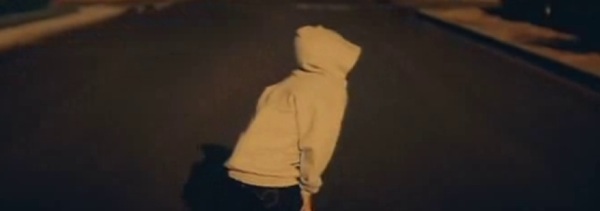 In September, when I first saw the Wilderness Downtown, the interactive music video by director Chris Milk and musical group Arcade Fire, I said it was the best piece of Net art I'd seen in over a decade. I stand by that. Working on this tour de force of HTML5, Milk had top-notch collaborators inside Google Creative Lab. My pal David-Michel Davies, exec director of the Webby Awards, recently visited with the Lab's marketing manager Thomas Gayno there and posted some notes from their conversation: What would you say is the main goal for the Creative Lab in supporting and working on a project like Wilderness Downtown?"Behind the Scenes of Google Creative Lab's The Wilderness Downtown" |
| You are subscribed to email updates from Boing Boing To stop receiving these emails, you may unsubscribe now. | Email delivery powered by Google |
| Google Inc., 20 West Kinzie, Chicago IL USA 60610 | |

 Among the judge's host of complaints against the government was his alarm that prosecutors would put on two witnesses who may have broken the law.
Among the judge's host of complaints against the government was his alarm that prosecutors would put on two witnesses who may have broken the law. 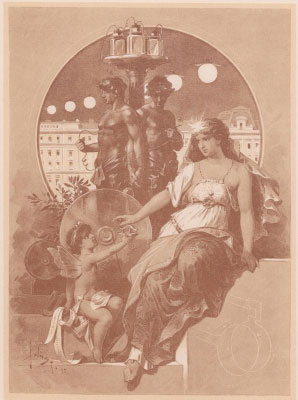 I recently posted
I recently posted 
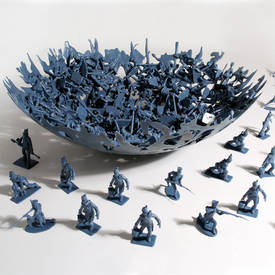 Heat your oven to 300 degrees. Arrange a layer of army men on the bottom and along the sides of a bowl. Use a Pyrex bowl, any size you want, or something similar that can go in the oven. Carefully put the bowl of soldiers into the over so that you don't knock any of the soldiers off the side of the bowl.
Heat your oven to 300 degrees. Arrange a layer of army men on the bottom and along the sides of a bowl. Use a Pyrex bowl, any size you want, or something similar that can go in the oven. Carefully put the bowl of soldiers into the over so that you don't knock any of the soldiers off the side of the bowl.  Do you have an innovative project that you think is "green" or one you've been thinking about starting? That word green gets tossed around a lot. Do you think others would find your project "environmentally-friendly," a worthwhile solution to today's environmental problems? Does it promote conservation? Appropriate use of technology? Let's find out. MAKE is running a Green Project Contest, as part of GE's ecomagination. Enter your project now for a chance to win a trip for two to a Maker Faire of your choice (Bay Area, Detroit, New York) in 2011!
Do you have an innovative project that you think is "green" or one you've been thinking about starting? That word green gets tossed around a lot. Do you think others would find your project "environmentally-friendly," a worthwhile solution to today's environmental problems? Does it promote conservation? Appropriate use of technology? Let's find out. MAKE is running a Green Project Contest, as part of GE's ecomagination. Enter your project now for a chance to win a trip for two to a Maker Faire of your choice (Bay Area, Detroit, New York) in 2011!
No comments:
Post a Comment